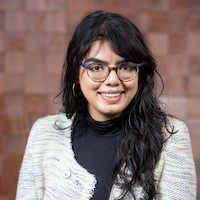Amrita Mazumdar
Founder & CEO, Vignette AI
University of Washington CoMotion Fellow

Invited Talk: Learning for Better Video Processing Systems
Slides
Video
Abstract:
Modern video sharing and analytics systems use large volumes of images and video to understand the visual world, leveraging machine learning (ML) algorithms to generate features and semantic metadata. While these ML systems generate valuable information about the underlying structure and meaning of video data, videos are typically stored as a single encoded file containing frames of pixels, omitting any ML-generated information during compression. In this talk, I will present recent progress on developing new video storage and compression systems that incorporate learned features and compression parameters, such as visual saliency or semantic objects. Our systems reduce overall video bandwidth while maintaining application performance. I will also discuss early efforts and challenges in applying machine learning for both encode and decode pipelines.
Biography:
Dr Mazumdar is a computer systems and architecture researcher with an emphasis on visual computing applications, like AR/VR and video streaming. Since receiving her PhD in June 2020, she has been building Vignette Inc., a University of Washington (UW) spin-out company based on her visual computing research and funded by a CoMotion Fellowship.
Her PhD work was advised by Luis Ceze and Mark Oskin in the Allen School of Computer Science at the University of Washington. During grad school, she worked in the computer architecture group, the UW Reality Lab, and the UW DB group. She also spent time working with vision and graphics researchers at the Facebook Reality Lab and Google Research.
Her research focuses on new systems for VR, video, and graphics using hardware-software codesign and ML-for-systems techniques. My work spans the glass-to-glass visual computing pipeline; She likes to work on systems problems ranging from camera capture, to visual data processing and storage, to media distribution and rendering. In her dissertation, she proposed perceptual optimizations, a new class of domain-specific optimizations for vision and graphics workloads, to improve performance for custom hardware accelerators, storage systems, and data management systems.
Before graduate school, she studied computer engineering and English literature at Columbia University.